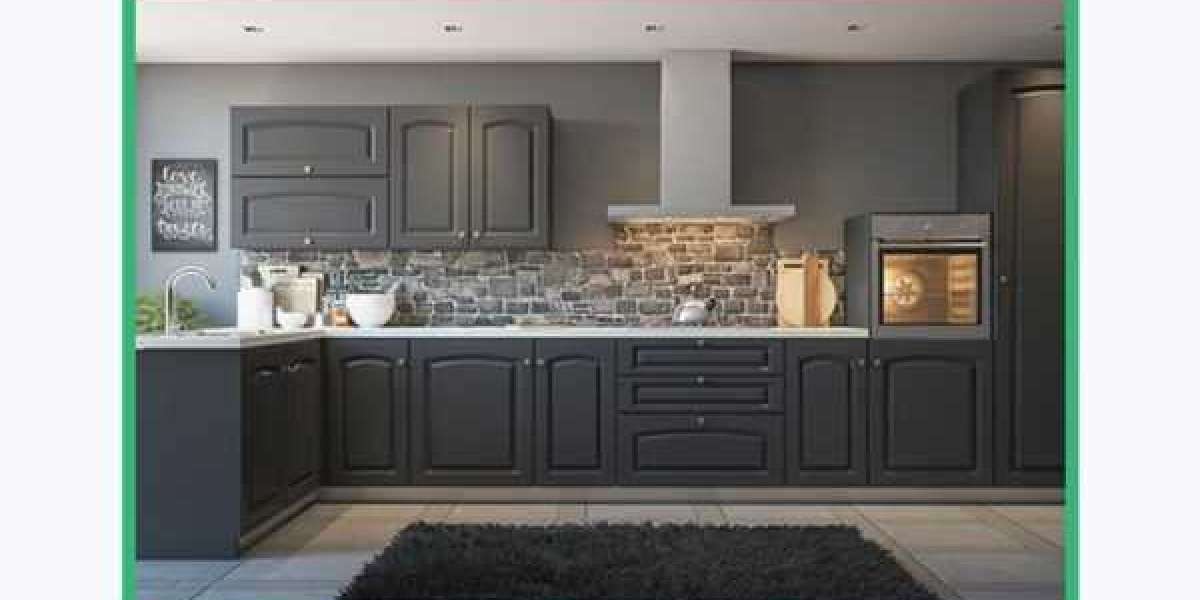Designing a kitchen that is both practical and visually appealing requires more than just choosing attractive finishes. The layout plays a crucial role in determining how smoothly you can move between cooking, cleaning, and storage tasks. A well-planned kitchen layout eliminates unnecessary steps, maximizes space, and enhances overall efficiency. Whether you are building a new home or renovating an existing one, understanding how different layouts impact workflow can help you make smarter decisions.
The concept of an efficient kitchen is not new, but modern households now prioritize designs that combine style with utility. Families want kitchens that cater to their daily routines, fit their space, and provide the functionality required for cooking and entertaining. By selecting the right layout, homeowners can strike a balance between comfort and productivity while creating a kitchen that truly reflects their lifestyle.
The Importance of a Functional Kitchen Layout
A kitchen layout determines the placement of essential elements such as the stove, sink, and refrigerator. These three components form what is commonly referred to as the "kitchen work triangle." When arranged correctly, the work triangle minimizes wasted motion and allows seamless transitions between cooking, washing, and storing activities. However, a poor layout can lead to constant backtracking, cluttered counters, and frustration during meal preparation.
Efficiency in the kitchen goes beyond just speed. It is also about reducing physical strain and ensuring that storage, lighting, and ventilation complement the workflow. For instance, placing the sink too far from the stove can make cooking tedious, while inadequate counter space next to the refrigerator can make unloading groceries inconvenient. A well-thought-out layout prevents these issues and creates a harmonious environment where every inch of space serves a purpose.
Popular Kitchen Layouts That Enhance Workflow
Different kitchens call for different layouts, depending on the available space and the homeowner’s needs. Some of the most effective designs include the L-shaped, U-shaped, galley, and island layouts. Each has unique benefits and challenges, making it essential to understand which one best suits your lifestyle.
The L-shaped layout is highly versatile and works well in both small and large kitchens. It provides two adjacent walls of counter space, allowing easy movement between work areas while keeping the center of the kitchen open. On the other hand, the U-shaped layout maximizes efficiency by surrounding the cook on three sides, offering ample storage and surface area. This design is particularly popular in homes where the kitchen serves as the main hub for cooking and family gatherings.
The galley kitchen, often found in apartments or compact homes, arranges counters and appliances along two parallel walls. While it may feel narrow, its streamlined design makes meal preparation efficient by keeping everything within easy reach. Finally, the island layout has become increasingly desirable in modern homes. Adding an island not only increases counter space but also provides room for casual dining, socializing, or even additional appliances.
The Role of Space in Kitchen Efficiency
One of the biggest mistakes homeowners make is underestimating the impact of space on efficiency. A cramped kitchen can make even the most advanced design feel restrictive, while an oversized kitchen with poor planning can force unnecessary steps. The key is to optimize space in proportion to the household’s cooking and storage needs.
For example, open floor plans often integrate the kitchen with dining or living areas, requiring layouts that ensure smooth traffic flow. In such cases, placing the refrigerator or oven away from high-traffic zones can prevent disruptions during meal preparation. Similarly, small kitchens benefit from vertical storage solutions, such as tall cabinets or open shelving, which keep countertops free for cooking tasks. A layout that aligns with the available space ensures that functionality is never sacrificed for style.
Storage and Organization in Kitchen Layouts
Efficient storage is at the heart of every practical kitchen. No matter how stylish the design, a layout that lacks proper organization will always feel cluttered and unmanageable. A thoughtful kitchen layout incorporates storage solutions that match the homeowner’s cooking habits and lifestyle.
For instance, drawers near the stove should house cooking utensils, while cabinets near the sink are ideal for cleaning supplies. Pull-out racks, corner units, and pantry cabinets can make use of otherwise wasted spaces, ensuring that every item has its place. In larger kitchens, islands can double as storage units, with built-in shelves or drawers that keep frequently used items accessible. Organization is key to maintaining efficiency, and the right layout makes it effortless.
Lighting and Ventilation for Better Workflow
While layout is often associated with the placement of appliances and counters, lighting and ventilation also play significant roles in workflow efficiency. A poorly lit kitchen can slow down tasks and create safety hazards, while inadequate ventilation can make cooking uncomfortable.
Task lighting, such as under-cabinet fixtures, ensures that work surfaces are properly illuminated for food preparation. General lighting, like ceiling-mounted fixtures or pendant lights, brightens the overall space and contributes to the kitchen’s ambiance. Meanwhile, proper ventilation, either through windows or range hoods, prevents smoke, odors, and heat from disrupting the cooking process. When integrated into the layout, these elements enhance not just efficiency but also the overall comfort of the kitchen.
Modern Kitchen Trends and Local Considerations
As global design trends evolve, homeowners in different regions adapt layouts to suit cultural and practical needs. In many households, the kitchen is not just a cooking space but also a central gathering area. This has led to layouts that incorporate breakfast bars, open shelving, and multipurpose islands.
For those exploring kitchen design in Pakistan with prices, layouts often balance affordability with practicality. Local materials, space constraints, and family habits influence how kitchens are planned. For example, Pakistani kitchens often prioritize durability, ample storage, and ventilation due to the local climate and cooking styles. Understanding regional preferences ensures that the layout is not only efficient but also culturally relevant.
How to Choose the Right Kitchen Layout
Selecting the right kitchen layout requires evaluating your household’s cooking habits, available space, and long-term needs. Start by considering how often you cook, how many people use the kitchen at the same time, and whether you want the space to serve social functions.
If you enjoy entertaining guests, an island layout with seating might be the best option. If your kitchen is compact, a galley design could offer maximum efficiency. Larger households may prefer a U-shaped kitchen that supports multiple users at once. Consulting with a professional designer can help refine these choices, ensuring that the final layout enhances workflow without compromising on aesthetics.
The Lasting Value of an Efficient Kitchen
An efficient kitchen is an investment that pays off in daily convenience, long-term satisfaction, and even property value. A layout that streamlines workflow makes cooking enjoyable rather than stressful. It also ensures that the kitchen remains functional for years, adapting to changing family needs.
Beyond convenience, a well-planned kitchen layout adds resale value to a home. Buyers often prioritize kitchens when making purchasing decisions, and a functional design can set your property apart. Whether you are renovating for personal use or future resale, focusing on layout efficiency is one of the smartest design choices you can make.
Conclusion
The success of a kitchen lies not only in its appearance but in how effectively it supports daily tasks. From the work triangle to storage, lighting, and ventilation, every detail contributes to a layout that enhances workflow and efficiency. By choosing a design suited to your space, lifestyle, and regional considerations, you can create a kitchen that is both practical and inviting.














